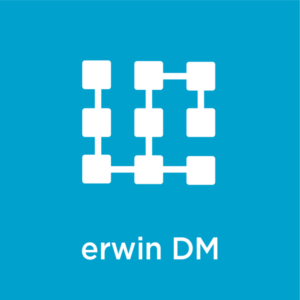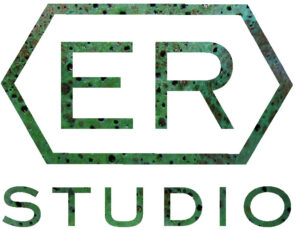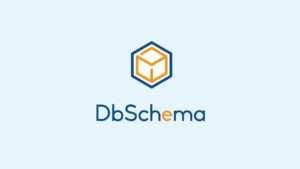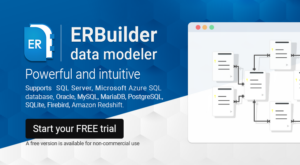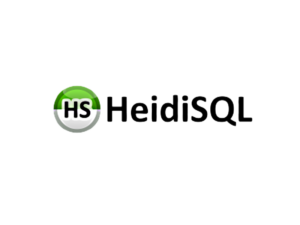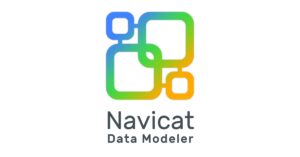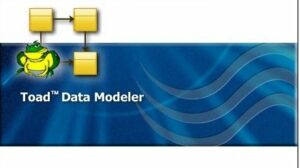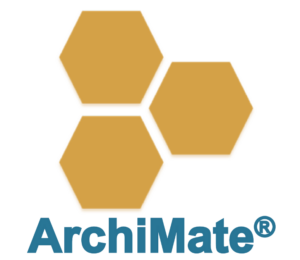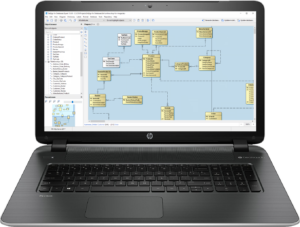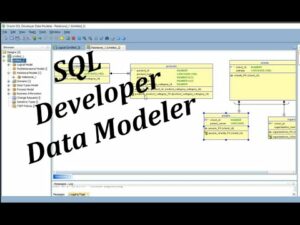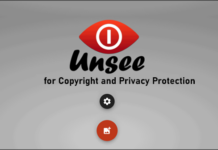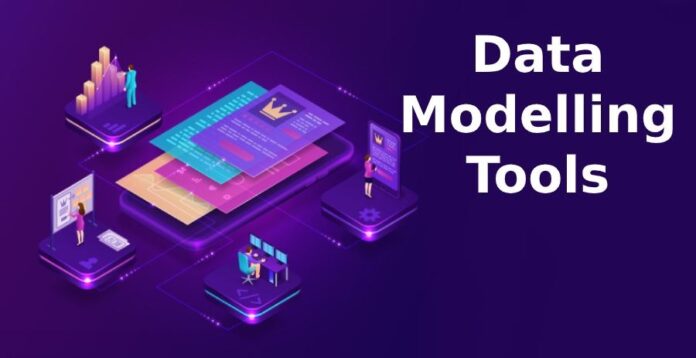
Best Data Modeling Tools will be described in this article. Proper data modelling is frequently overlooked by developers when working with databases. The data structure may undergo a great deal of tinkering as a result over time. For a proof of concept, fiddling is acceptable. However, you should establish the data structure right away when tasked with creating a complicated, dynamic project.
In addition, when there is a chasm between the business team and the development team, a lot of potentially useful data might be misplaced, lost, or underutilised. Can business and DBAs communicate more effectively using data modelling? In order to accomplish it, what tools should you employ?
Data modelling: What Is It?
An illustration of data specification is a data model. A UML diagram is a common format for designing data models. Data can be saved and gathered in numerous ways, regardless of whether it is a SQL or NoSQL database. Data modelling is the process of deciding what information needs to be gathered and how it should be stored.
There are several tools made expressly for data modelling, but you can also accomplish it with a pen and paper and any UML editor. In addition to creating attractive visuals, data modelling tools worth their salt will also seamlessly connect with your data stores. Let’s quickly review how data modelling works before moving on to our list of the top 10 data modelling tools you should be aware of.
- logical model, physical model, and conceptual model
- Typically, there are three layers to data modelling:
- Establishing the entities, their qualities, and their interactions using the conceptual model
- To establish the relationships between the data items and describe their structure, use the logical data model.
- The Physical Data Model is employed to describe how the data model is implemented in a particular database.
- I suggest reading more to learn more about the various data modelling levels.
- What data modelling has to offer
- Data modelling has a number of advantages.
- The quality of the data is already improved by the straightforward process of considering what data is necessary before constructing the data structures.
- The advantages don’t end there, either.
Teams and individuals with a business orientation can model the conceptual layer from a business perspective. Non-technical individuals who will ultimately use the data might specify the type of data they require by employing a conceptual layer.
Only the physical layer can be established by developers, and the logical layer can be handled by IT. Having the data model examined from several angles always raises the calibre of the data. The data structures can also be visualised with the help of suitable data modelling. This can assist in identifying potential flaws and strengths.
The right data structures for storing the data can also be selected by developers. When it is discovered that the data structure is insufficient, this eliminates the requirement to migrate the data.
Data modelling tools: what are they?
Quick and effective data modelling are made possible by data modelling tools. They serve as a link between the data and its many levels of models.
The majority of data modelling tools can reverse-engineer current data bases into models, merge and compare schemas and models, and automatically build data base schemas or DTD.
In order to facilitate conceptual data modelling, good data modelling tools will be simple for non-technical users.
10 Best Data Modeling Tools To Know In 2023
In this article, you can know about 10 Best Data Modeling Tools To Know In 2023 here are the details below;
1. erwin Data Modeler
Erwin will undoubtedly comprehend data and data modelling, if nothing else. In order to see your data and make the most of it, this data modelling tool goes above and beyond just building the data model by ensuring ongoing integration with data databases like MySQL and PostgreSQL.
Multiple variations to meet the various requirements of the client Tools for comparison that are robust Erwin provided multiple versions with significant variations in rich visualisation with metadata.
- Model creation and deployment are available in the base edition.
- To aid in data visualisation, the navigator is a read-only version.
- The workshop edition is a collaborative tool built on a repository.
- The NoSQL version, which as its name implies handles non-relational databases, is the most specialised tool.
- There are comparison tools available in both the standard version and the workshop version that may be used to identify discrepancies between different databases or versions.
- Pricing for the regular edition is $299 per month or $2,999 per year.
- The monthly or annual cost of the workshop edition is $449.
2. ER/Studio
Like erwin, ER/Studio has been around for a while, and it shows in both the good and the bad. Although ER/Studio offers a rich feature set as a result of decades of advancements, they occasionally struggle to stay up with emerging technology. Tools for merging and comparing files using Git Capability for both forward and reverse engineering
The SSIS and SSRS standards are used in the effective and current Git integration for user-friendliness. In order to maximise the value of your data, ER/Studio was created with the notion of bridging the barriers between business and developers.
ER/Studio will give you the tools you need to make the most of your data in the future, whether you already have it or are starting from scratch. You can remove redundancy with the aid of the tool.
Pricing: Workstations start at $1,470.40 per user, however rates are typically negotiated.
3. DbSchema
A visual database builder and manager called DbSchema supports several different types of databases, including SQL, NoSQL, and cloud databases. DbSchema offers, among other things:
Support for Mercurial, SVN, CVS, in addition to GIT Platform updates and regular bug fixes (every 2 or 3 months) Unfortunately, DbSchema lacks version management features and provides little information regarding the description of the fields.
Users also claim that it is less trustworthy than other tools. Pricing: Perpetual lifetime licences for single users start at $127 and $63 respectively (for academic purposes).
Both a free version and trial licences can be obtained upon request.
4. ERBuilder
Data modelling should be available to developers thanks to ERBuilder Data Modeler. As a result, the conceptual and logical data modelling levels are not a good fit for it. Unfortunately, ERBuilder lacks tools for version control and collaboration. But one of its great points is the reliable, user-friendly graphical interface. When using ERBuilder to explore data, switching between tables is simple and elaborate diagrams are instantly created with a single click. Also check Newspaper Advertising
Price: There are several different pricing options, ranging from a $49 subscription plan to a $99 perpetual model.
5. HeidiSQL
Physical layer data modelling is made simple with HeidiSQL, an open-source and free application. One of the multiple widely used tools for MariaDB and MySQL in the world is HeidiSQL, which is also free.
Contrary to proprietary competitors, it lacks any distinctively remarkable unique features. Although consumers claim it has no negative effects and only needs a restart, it does have a few stability difficulties.
6. Navicat Data Modeler
With a very appealing user interface, Navicat Data Modeler is a cost-effective and effective data modelling tool. Navicat does not appear dated, unlike many data modelling tools.
Navicat has the following characteristics, similar to many of the more expensive data modelling tools (such as erwin and ER/Studio): Tools for reversing engineering Modeling Navicat Cloud in Physical, Conceptual, and Logical Form
Given its pricing structure, Navicat is significantly more economical than erwin and ER/Studio and offers an equal number of capabilities, albeit some customers have complained about the absence of field descriptions.
Your connection preferences, queries, and models may be synchronised between Windows, macOS, and iOS devices using the Navicat cloud. Pricing: Monthly rates begin at $22.99.
7. Toad Data Modeler
Toad Data Modeler is compatible with a variety of operating systems and versions. For instance, Toad has supported MS SQL Server since 2000.
Toad licencing and setup are more difficult but they can be made easier. Working separately on Oracle and MySQL also requires a different programme. The best option would be a one-stop shop.
Piericing: Prices start at $293 per year.
8. Archi – Open Source ArchiMate Modeling
For all types of models, including big enterprises and small businesses, Archi is a Data Modeling toolset.
- It makes use of ArchiMate, a visual language for notating complicated systems.
- Welcoming webpage and user manual, open source
- Clean and easily accessible version history and a roadmap
In contrast to HeidiSQL, another open-source option, Archi features a simple user interface and supports both conceptual and actual data modelling. Also check SEO Friendly Content
Payment: Free
9. DeZign for Databases
Designed for developers and DBAs, DeZign for Databases is a user-friendly and straightforward tool for data modelling. Ahead-of-the-curve characteristics like N:M relationships DeZign is a tool that emphasises advanced data modelling and data visualisation features.
It lacks the tools for efficient conceptual later modelling because it is aimed at developers and DBAs.
Pricing: $228 to start
10. SQL Database Modeler
Being entirely web-based, SQL Database modeller is a sleek and contemporary SaaS. The tool is very simple to use and includes numerous unique cloud capabilities and collaborative tools. There is no need to download or instal anything. Web application Quick to launch and form a preliminary opinion
- development without code
- Since the SQL Database Modeler website is so enjoyable, I strongly encourage you to go there and look around.
- You would at least take pleasure in the excursion.
- Since both are web-based, the quality of the website reflects the quality of the tool as well.
- Nevertheless, the platform’s preference for avoiding using code whenever possible is one of its main draws.
- Prices start at $25 per month or $240 per year.
- Although by no means comprehensive, the list should at least get you thinking about potential solutions.
- List your needs and compare the options side by side as the following step.
- You would be wise to check that the tool supports both all the layers you need and the databases you intend to utilise when deciding which tool to use.
- Version control is a huge help for any piece of software, whether you plan to collaborate or not.
- The contemporary SQL Database Modeler and Navicat Data Modeler stand out among the technologies on this list that do support the cloud.
- A tool as well-known as ER/Studio or erwin Data Modeler offers security, though.

